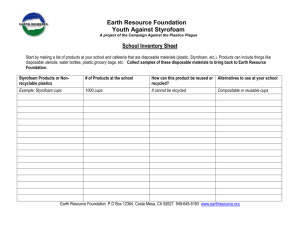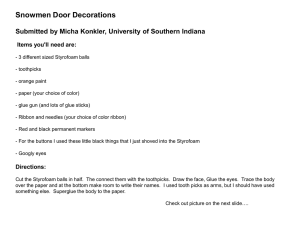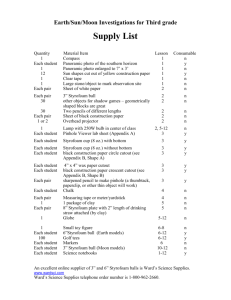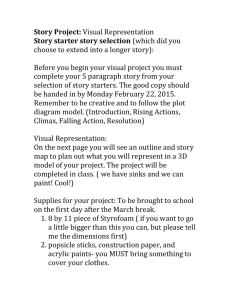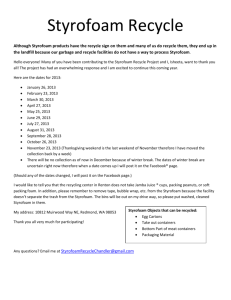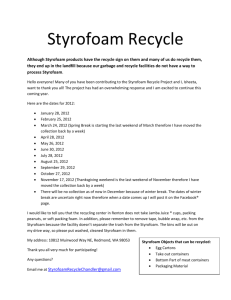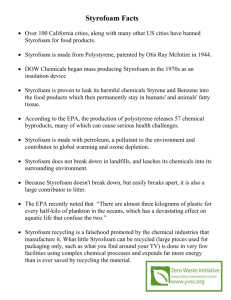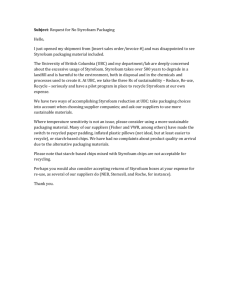doc - US Sai Organization
advertisement
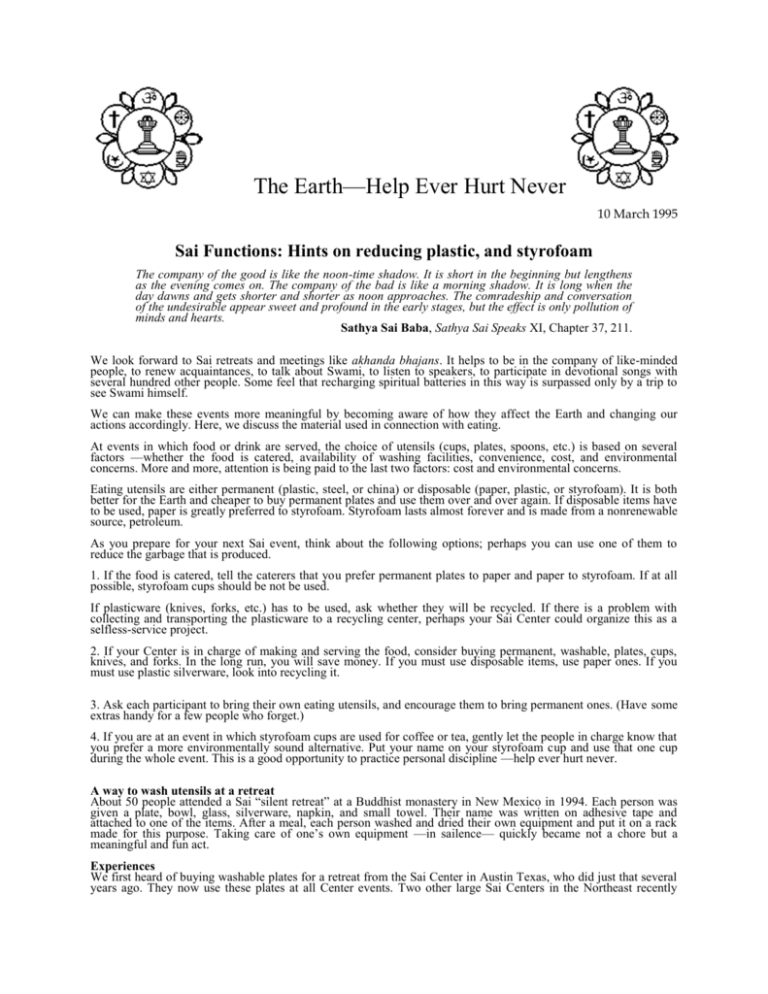
The Earth—Help Ever Hurt Never 10 March 1995 Sai Functions: Hints on reducing plastic, and styrofoam The company of the good is like the noon-time shadow. It is short in the beginning but lengthens as the evening comes on. The company of the bad is like a morning shadow. It is long when the day dawns and gets shorter and shorter as noon approaches. The comradeship and conversation of the undesirable appear sweet and profound in the early stages, but the effect is only pollution of minds and hearts. Sathya Sai Baba, Sathya Sai Speaks XI, Chapter 37, 211. We look forward to Sai retreats and meetings like akhanda bhajans. It helps to be in the company of like-minded people, to renew acquaintances, to talk about Swami, to listen to speakers, to participate in devotional songs with several hundred other people. Some feel that recharging spiritual batteries in this way is surpassed only by a trip to see Swami himself. We can make these events more meaningful by becoming aware of how they affect the Earth and changing our actions accordingly. Here, we discuss the material used in connection with eating. At events in which food or drink are served, the choice of utensils (cups, plates, spoons, etc.) is based on several factors —whether the food is catered, availability of washing facilities, convenience, cost, and environmental concerns. More and more, attention is being paid to the last two factors: cost and environmental concerns. Eating utensils are either permanent (plastic, steel, or china) or disposable (paper, plastic, or styrofoam). It is both better for the Earth and cheaper to buy permanent plates and use them over and over again. If disposable items have to be used, paper is greatly preferred to styrofoam. Styrofoam lasts almost forever and is made from a nonrenewable source, petroleum. As you prepare for your next Sai event, think about the following options; perhaps you can use one of them to reduce the garbage that is produced. 1. If the food is catered, tell the caterers that you prefer permanent plates to paper and paper to styrofoam. If at all possible, styrofoam cups should be not be used. If plasticware (knives, forks, etc.) has to be used, ask whether they will be recycled. If there is a problem with collecting and transporting the plasticware to a recycling center, perhaps your Sai Center could organize this as a selfless-service project. 2. If your Center is in charge of making and serving the food, consider buying permanent, washable, plates, cups, knives, and forks. In the long run, you will save money. If you must use disposable items, use paper ones. If you must use plastic silverware, look into recycling it. 3. Ask each participant to bring their own eating utensils, and encourage them to bring permanent ones. (Have some extras handy for a few people who forget.) 4. If you are at an event in which styrofoam cups are used for coffee or tea, gently let the people in charge know that you prefer a more environmentally sound alternative. Put your name on your styrofoam cup and use that one cup during the whole event. This is a good opportunity to practice personal discipline —help ever hurt never. A way to wash utensils at a retreat About 50 people attended a Sai “silent retreat” at a Buddhist monastery in New Mexico in 1994. Each person was given a plate, bowl, glass, silverware, napkin, and small towel. Their name was written on adhesive tape and attached to one of the items. After a meal, each person washed and dried their own equipment and put it on a rack made for this purpose. Taking care of one’s own equipment —in sailence— quickly became not a chore but a meaningful and fun act. Experiences We first heard of buying washable plates for a retreat from the Sai Center in Austin Texas, who did just that several years ago. They now use these plates at all Center events. Two other large Sai Centers in the Northeast recently bought permanent plates and are washing everything from now on —the men promise not to leave the job of cleaning up to the women! At another Sai Center, three devotees have taken on as their seva the task of washing dishes and cleaning up at all Center functions. Sai Story Swami: Devotee: Swami: Devotee: Swami: Does your group like the canteen food? Oh yes Swami! It's not too hot? No Swami, everybody is very happy. Happiness is union with God. Nothing to do with food. Fact Americans throw away enough disposable plates and cups to serve a picnic to everyone in the world six times a year. Facts about styrofoam (taken from “50 Simple Things You Can Do To Save the Earth”) Styrofoam is made from benzene (which is made chiefly from coal tar), converted to “styrene”, and then injected with gases to make it like “foam”. The gases used in the styrofoam are generally not good for the environment. Styrofoam lasts forever, basically. It just sits there in the landfill, waiting for your descendents to find a way to get rid of it. Flakes of styrofoam can enter food or drink and be harmful. Styrofoam can hurt animals. It floats in water and is often broken into small pellets, which marine life eat by mistake. The buoyancy of styrofoam has been known to keep sea turtles who eat it from diving. It can also clog their system, starving them to death. Alternatives to styrofoam for packing Packages you receive in the mail may have styrofoam pellets for packing. However, there are alternatives. One is popcorn. Another is a pellet that actually dissolves in water. Some people who receive styrofoam in packages send the styrofoam back to the company, along with a note asking them to find an alternative.
